Top 10 Most Beautiful Towns In The UK
Choosing the best small English towns is no easy feat. This luscious land bursts with villages so enchanting they capture tourists' hearts and overload their camera's SD cards. They are the stuff of fairy tales and the background for a gazillion postcards.
From historic fishing hamlets to towns teeming with Cotswold charm, England does quaint like no other. We're talking charmingly crooked buildings, thatched roof homes, babbling brooks, and gardens so lovely, you'll swear they were made by fairies. No wonder England is one of the world's most visited countries.
Check out this top 10 beautiful towns you can visit in England.
1. Clovelly, Devon
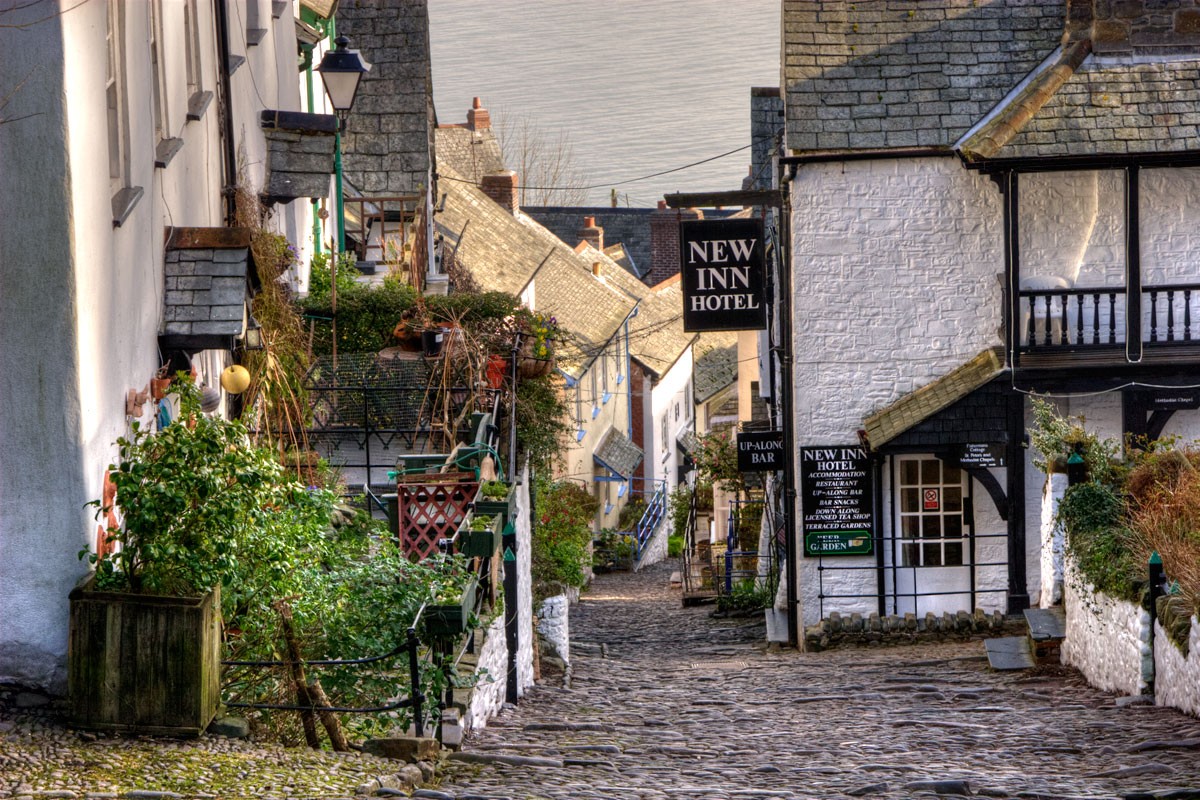 |
| Devon Guide |
Set into a steep hillside, Clovelly is one of the best known and most unusual villages in the North Devon. The cobbled high street winds its way down the hillside through traditional 16th century whitewashed cottages decked with fuchsias and geraniums. This street drops 400ft in the half mile down to the small harbour.
Visitors have to park at the top of the hill next to the Heritage Centre as traffic is banned from the high street. There is a Land Rover service which ferries visitors up and down via a back road, for those not wishing to negotiate the steep hill on foot. This service takes visitors as far as the Red Lion beside the harbour. At one time, donkeys used to be used to take visiting tourists down into the village, but these have now been retired.
All deliveries for people living in Clovelly have to be taken down the hill by sledge. These sledges can be seen at the side of the cottages by anyone walking down through the village towards the harbour. This ban on traffic has preserved the atmosphere of the village. The lower part of the village has been saved from development by the Hamlyn family, the local landowners. There are no holiday cottages allowed in the main village and no concessions to the tourist industry. Consequently, the picture postcard village is still a living village, where fishermen still mend their nets on the quay.
2. Bradford
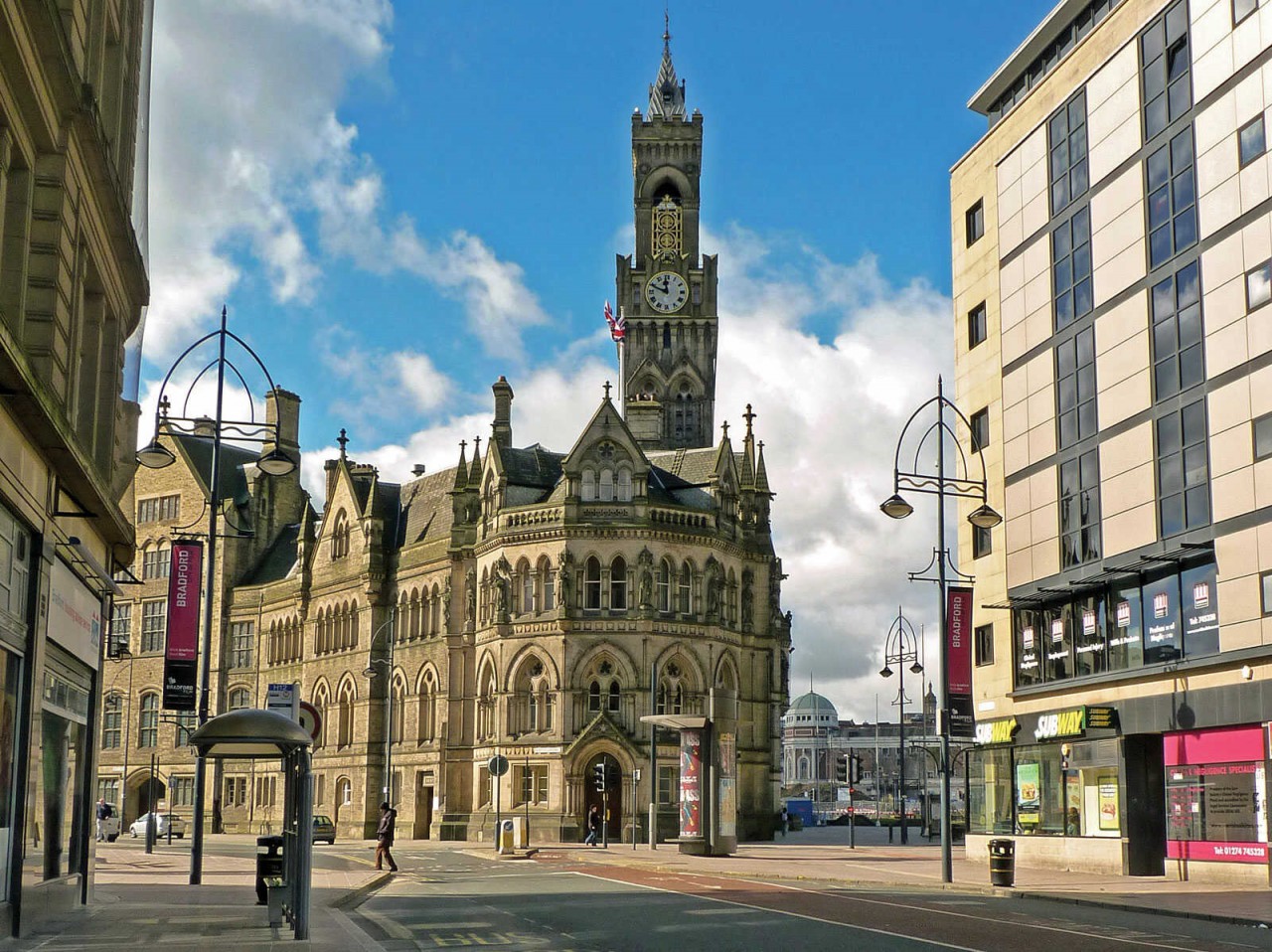 |
| Britannica |
Bradford is the second-largest city in West Yorkshire, England. It forms the core of the City of Bradford metropolitan borough, which also includes the towns of Keighley, Shipley, Bingley and Ilkley, and borders the City of Leeds and Calderdale to the east and south respectively as well as the counties of Lancashire and North Yorkshire.
Historically part of the West Riding of Yorkshire, Bradford rose to prominence in the 19th century as an international centre of textile manufacture, particularly wool. It was a boomtown of the Industrial Revolution, and amongst the earliest industrialised settlements, rapidly becoming the "wool capital of the world"; this in turn gave rise to the nicknames "Woolopolis" and "Wool City". Lying in the eastern foothills of the Pennines, the area's access to a supply of coal, iron ore and soft water facilitated the growth of Bradford's manufacturing base, which, as textile manufacture grew, led to an explosion in population and was a stimulus to civic investment; Bradford has a large amount of listed Victorian architecture including the grand Italianate City Hall. Bradford became a municipal borough in 1847, and received its charter as a city in 1897. Since local government reform in 1974, Bradford's city limits have been within the City of Bradford metropolitan borough.
3. St. Ives, Cornwall
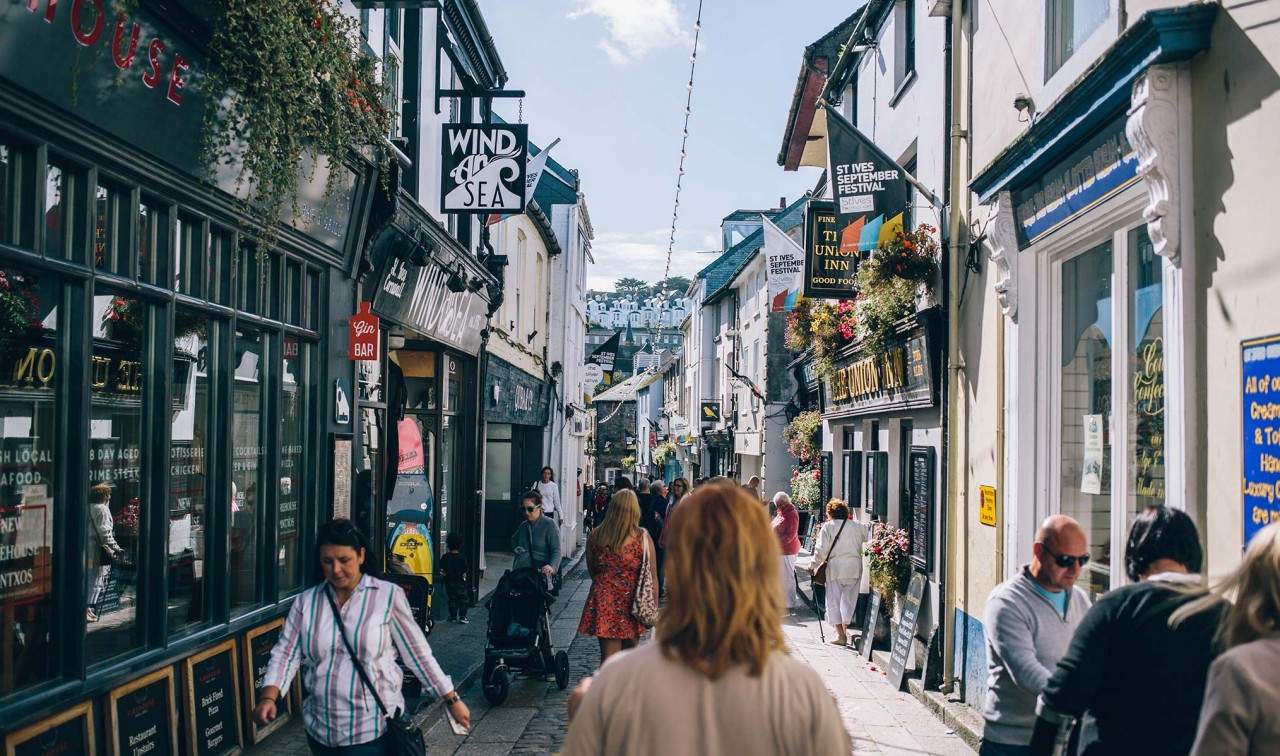 |
| St Ives Cornwall |
St Ives is a seaside town, civil parish and port in Cornwall, England. The town lies north of Penzance and west of Camborne on the coast of the Celtic Sea. In former times it was commercially dependent on fishing. The decline in fishing, however, caused a shift in commercial emphasis, and the town is now primarily a popular seaside resort, notably achieving the title of Best UK Seaside Town from the British Travel Awards in both 2010 and 2011. St Ives was incorporated by Royal Charter in 1639. St Ives has become renowned for its number of artists. It was named best seaside town of 2007 by The Guardian newspaper. It should not be confused with St Ive, a village and civil parish in south-east Cornwall.
St Ives has been a popular tourist destination since the St Ives Bay Line opened in 1877, allowing visitors to easily get to the town. St Ives has been named the best UK seaside town by The Guardian in 2007, and by the British Travel Awards in 2010 and 2011. In 2020, St Ives was named the most expensive seaside resort in the UK. The town has the second highest vistor-related spend in the UK, with tourists spending £85 million per year. Around 540,000 day trippers and 220,000 staying tourists visit St Ives every year, with the tourism industry accounting for around 2,800 jobs in the area.
Like in the rest of Cornwall, tourism has been criticised for bringing about problems in seasonal work and affordable housing in St Ives. In 2016, St Ives residents voted to ban second-home owners from buying new build housing, with 83% in favour. This came after average house prices in the town had been pushed up to over £320,000, almost 14 times the median annual earnings of someone in Cornwall. In 2019, the Financial Times reported that average house price was £351,800, saying that the new build policy had failed to stem the number of second homes. St Ives also faces a shortage of rentals; in 2021, while there were over 1,000 properties in the town available for short-term holiday let, there was only one long-term house available to rent.
4. Petworth
Petworth is a perfectly preserved market town nestled in the heart of the South Downs National Park. Steeped in history, Petworth has been voted Best Antiques Town and has links to the famous artist JMW Turner, a frequent visitor to Petworth House (National Trust). The town has many treasures to discover including Petworth Cottage Museum and Coultershaw Beam Pump, located 1 ½ miles south of Petworth on the A285 towards Chichester – all making it a day out to remember.
The town still celebrates its cultural past with an annual Fete in the Park and the nationally renowned Petworth Festival, a music and arts extravaganza that attracts thousands of visitors every summer from around the world.
Visitors wishing to indulge in a little retail therapy will be spoilt for choice. Petworth has a well-established reputation as a unique retail haven away from the bustle of the traditional High Street. It is a real treasure trove of independent boutiques, cafes, restaurants and accommodation. The town offers a wide range of products and services from flowers, fine foods, books, natural luxury skincare, ladies’ designer fashions, traditional gentlemen’s clothing not to mention the world-famous antiques and arts establishments - some 37 of them all within a half-mile radius.
5. Berwick-upon-Tweed
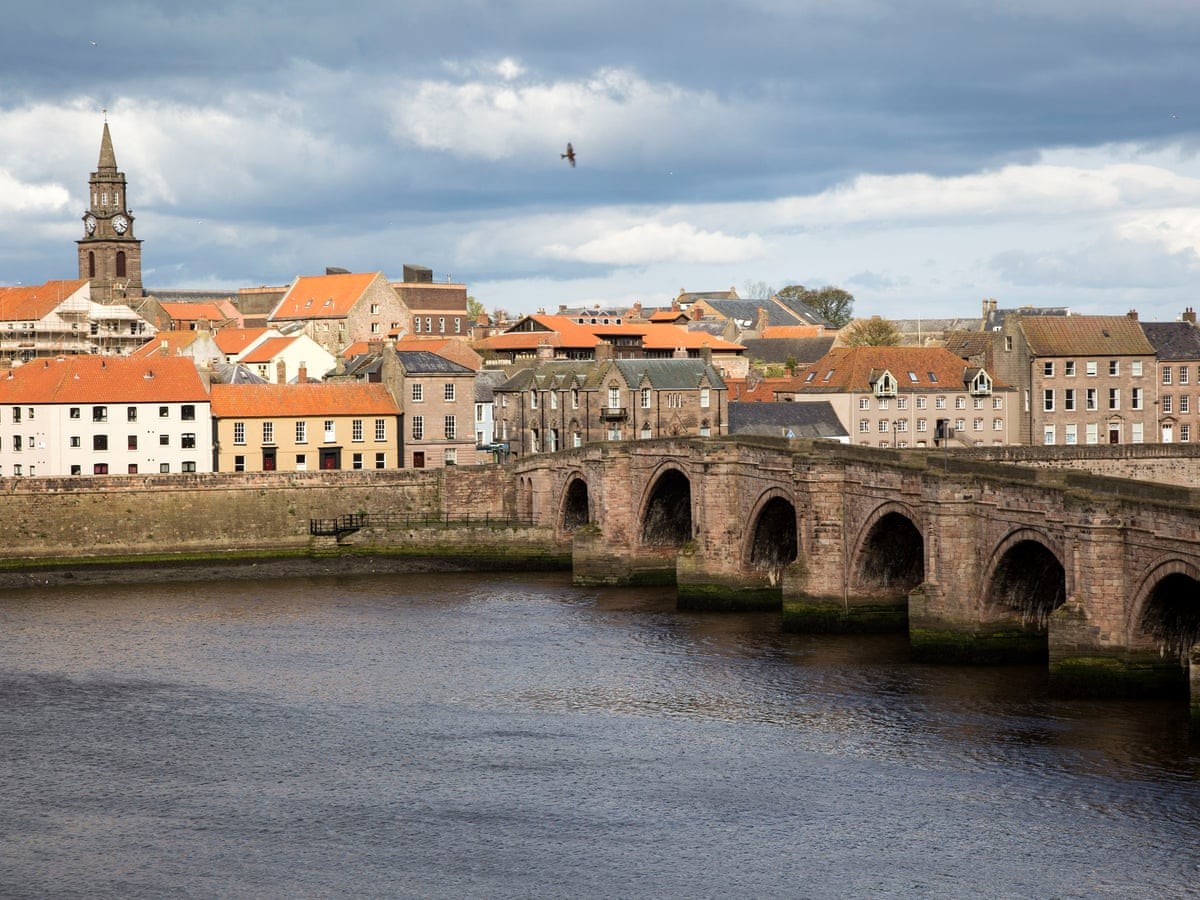 |
| The Guardian |
Cobbles, castles, beaches, and boat trips await you in historical Berwick-upon-Tweed. Teetering on the border of England and Scotland, secrets of a bloody, conflict-filled history linger in its Elizabethan town walls and ruinous castle remains.
This border town has a history of being passed between England and Scotland like a hot potato, and Berwick-upon-Tweed’s dominant Town Walls, old prison cells of the Town Hall and winding, cobbled streets hold a complex and violent past.
The romantic River Tweed runs through its centre, dominated by three iconic bridges that have seen years of conflict as control of the town was repeatedly changing. Climb on-board The Border Rose with Berwick Boat Trips, where you can sail beneath the magnificent Royal Border Bridge and into the mouth of the river for some seal and dolphin spotting. All the while, skipper David and crew will keep you entertained with anecdotes of the town’s turbulent history and its rich salmon fishing heritage.
Roam the river banks for spectacular views and cosy cafés to escape to when the weather takes a turn for the worst. Take advantage of the town’s position along the coast and wander along barely-trodden Berwick beach or watch the sunrise at Spittal Beach which lies less than two miles away. Then, taste exquisite seafood in one of Berwick’s eateries, as restaurants and pubs a-plenty line the cobbled and bunting-filled streets of the town centre.
Step into Berwick’s complex past and take a history tour through the town; see Berwick Town Hall’s atmospheric jail cells where graffiti from unruly 18th century cellmates lines the walls, get an insight into a soldier’s life at Berwick Barracks and take a haunting walk along the Elizabethan Town Walls. The walls supersede the ruined remains of breath-taking Berwick Castle, which is beautifully perched on a rocky outcrop over the river.
6. Stow-on-the-Wold
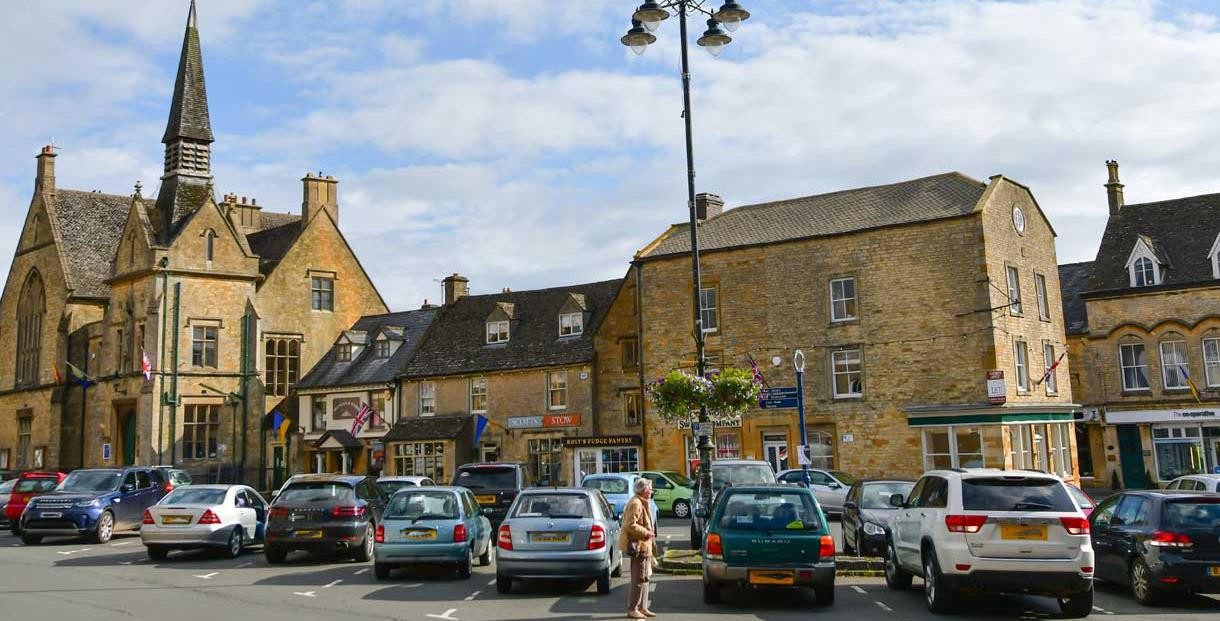 |
| Cotswolds.com |
At nearly 800ft, Stow is the highest of the Cotswold towns, located on the Roman Fosse Way and at the point where several roads meet, hence an important trading centre. It has a long history, it probably dates from a prehistoric fortified settlement on top of the hill, and had a special importance in the English Civil War, the last battle was fought close by in Donnington back in 1646. St Edward’s Church, was used as a prison for the defeated Royalist troops, as it was the only lockable building in the town. Some of the damage sustained at this time can still be seen today.
The Market Square is large and impressive and testifies to the town’s former importance. It is surrounded by town houses, independent shops, antique centres, cosy cafes and inns all built in the mellow local stone, and it has been the focus of town life over many centuries, with the medieval market stocks at one end, the ancient market cross at the other and the impressive St Edwards Hall standing in the centre. Some of the largest sheep fairs took place in the town with up to 20,000 sheep for sale in one day. Today the only market to take place in the square is the monthly Farmers' Market, on the first Thursday of the month, very popular with both visitors and locals alike.
Places of interest in Stow that really shouldn't be missed include England’s oldest Inn, the old stocks, St Edwards church with its ‘Tolkienesque’ North Door flanked by ancient yew trees and the tombstone of Captain Hastings Keyte who died at the battle of Stow. Not far away from the town centre are the old wells in Well Lane where you can view the ramparts of an Iron Age fort.
Twice a year, in May and October Gypsies gather from all over the country to meet on the outskirts of this small town, with lots of horses, ponies, Romany caravans and sightseers keen to soak up the atmosphere and make their purchases from the many stalls.
7. Fowey
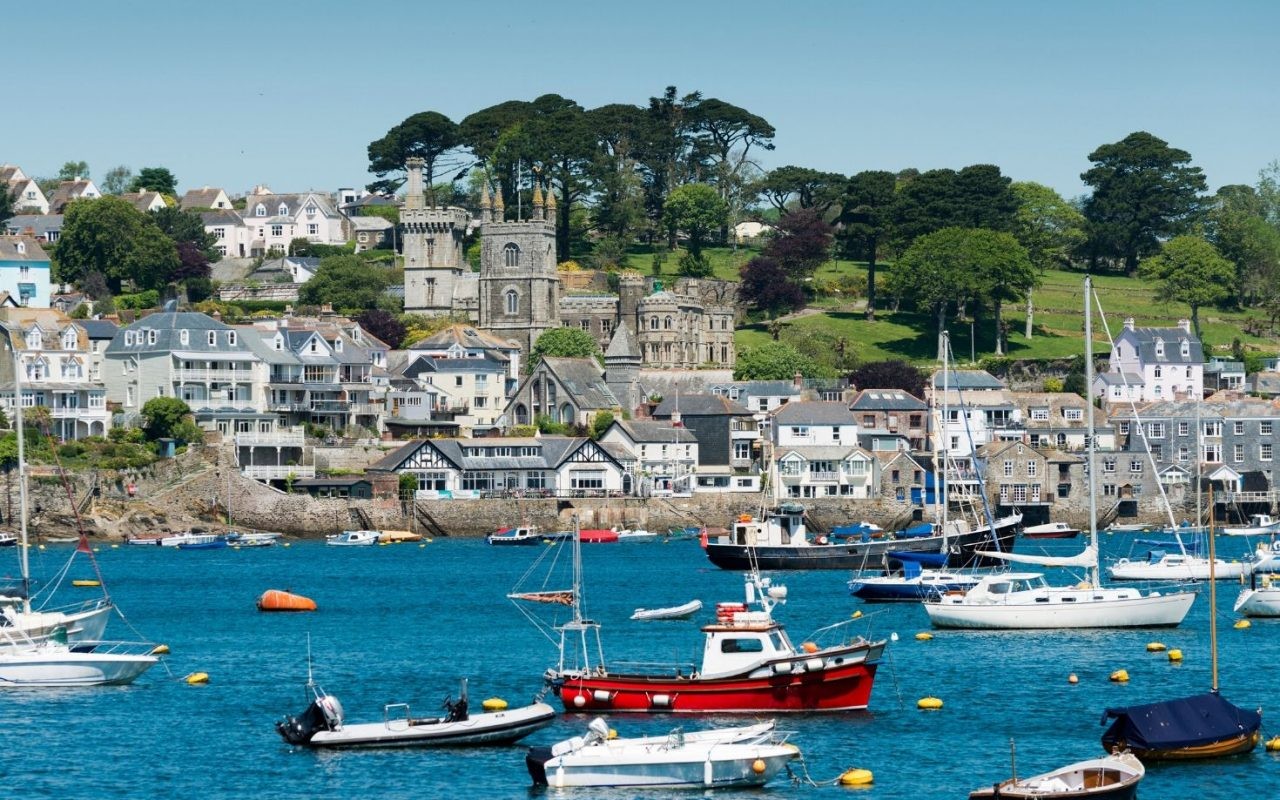 |
| Cornish Gems |
Steeped in history and lined with cobbled streets, Fowey is a charming medieval town that sits aside a spectacular, natural deep-water harbour, providing a nautical gateway to the rest of South Cornwall.
Perched on the western edge of the River Fowey, the port-town has a vibrant maritime history with beautiful Georgian architecture lining the pretty alleyways and boutique bistros. Visitors can stroll hand-in-hand along the harbour front, feasting on the iconic Fowey River Mussels in waterside cafes, before heading on to one of the regions many white sand beaches for an afternoon of sun soaking and splashing in the surf.
Long favoured by the staycation crowd and once home to esteemed English author Daphne du Maurier, Fowey oozes contemporary, coastal chic; where crisp local tipples are sipped to the setting of spectacular Cornish sunsets and bright sunny mornings are spent kayaking upstream to picture-perfect villages for impromptu picnics.
8. Hay- on- Wye
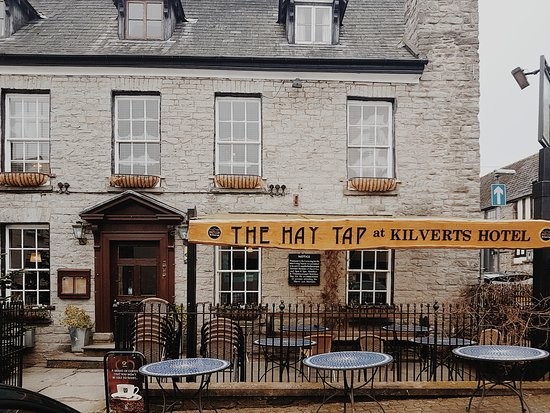 |
| TripAdvisor |
Hay-on-Wye (Welsh: Y Gelli Gandryll or just Y Gelli), often abbreviated to just "Hay" (the community uses the short version) is a small market town and community in the historic county of Brecknockshire (Breconshire) in Wales, currently administered as part of the unitary authority of Powys. With over twenty bookshops, it is often described as "the town of books", and is both the National Book Town of Wales and the site of the annual Hay Festival.
The population of the town in 1841 was 1,455. This had grown to 1,680 by 1901. The Town's size has not changed much since, with 2018 estimates at 1,900. The built-up area includes Cusop over the border and has a population of around 2,000.
Hay-on-Wye is a destination for bibliophiles in the United Kingdom, still with two dozen bookshops, many selling specialist and second-hand books, although the number has declined sharply in recent years, many becoming general antique shops and similar. Hay-on-Wye was already well known for its many bookshops before the festival was launched. Richard Booth opened his first shop there, called The Old Fire Station, in 1962, and by the 1970s Hay had gained the nickname "The Town of Books".
9. Whitby, Yorkshire
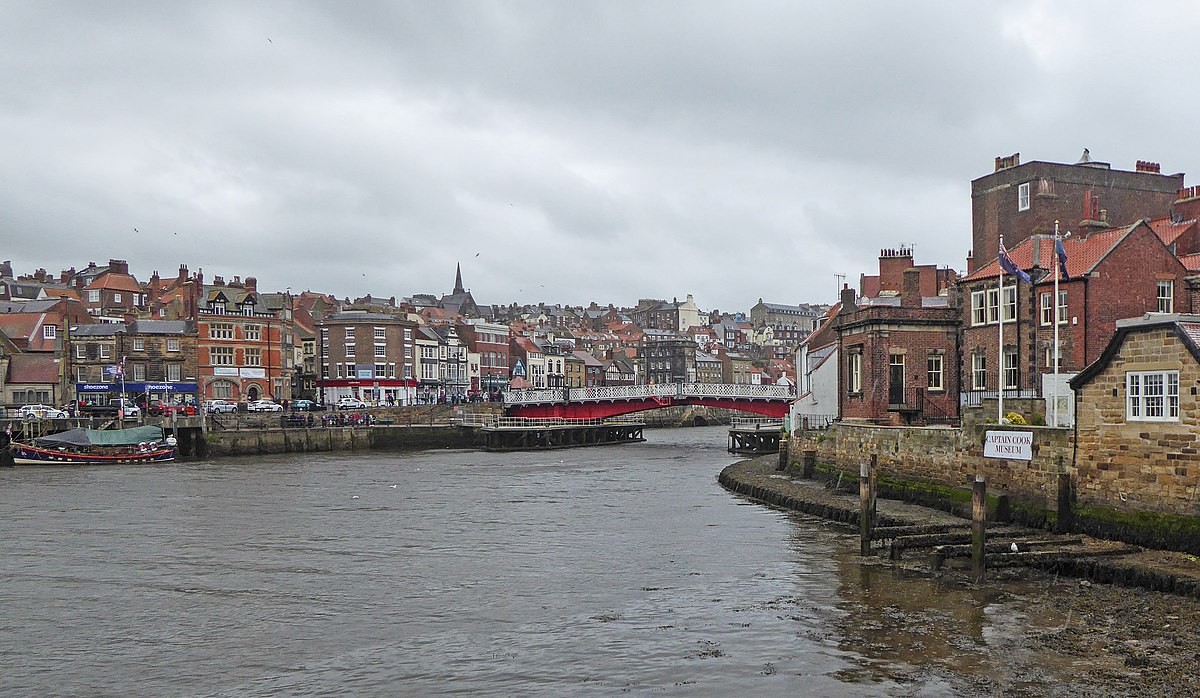 |
| Wikipedia |
The ancient seaport of Whitby, Yorkshire is a beautiful and picturesque natural harbour situated on England’s North East Coast.
It is essentially a town of two parts divided by the River Esk, and Whitby’s natural geographic situation has shaped both its historical and commercial past and continues to influence its culture to the present day.
Whitby is steeped in history. The East Side of Whitby is the older of the two sections and the location for the Abbey, the founding point for the town, which dates back to 656 AD. On the headland near the Abbey there are indications of an earlier Roman lighthouse and small settlement, indeed the early Saxon name for Whitby was Streonshal meaning Lighthouse Bay, which leads onto Yorkshire’s famous Cleveland National Trail.
At the bottom of the 199 steps that lead to the Abbey is Church Street (formerly known as Kirkgate), whose cobbled streets and many cottages and houses date from the 15th century, when the numerous narrow alleyways and yards provided escape routes for smugglers and gangs of youths from the customs men and press gangs who were hot on their heels. Church Streets origins can be traced back even further however, with dwellings having been documented at the foot of the Abbey steps as early as 1370.
The lively Market Place, which still attracts stallholders and visitors alike, dates back to 1640. Just off the Market Place is Sandgate (so called because it leads to and borders the east sands), a bustling high street where Whitby jet can still be purchased. Having been carved since the Bronze Age, the jewellery made from fossilized monkey puzzle trees was made fashionable by Queen Victoria, who wore it in mourning of her beloved Prince Albert following his death from supposed typhoid fever in 1861. Following the discovery of a Victorian jet workshop, completely sealed up in the attic of a derelict property in central Whitby, the Whitby Jet Heritage Centre removed and rehoused the workshop to allow visitors the chance to experience a unique piece of Whitby’s heritage.
Whitby West Cliff top, which is today dominated by hotels, guest houses, holiday accommodation and tourist attractions once played host to a very famous visitor. Bram Stoker stayed at a guest house in Royal Crescent in the late 19h century, and drew inspiration for his famous novel ‘Dracula’ from Whitby Abbey and the surrounding area. Indeed, the novel depicts Dracula coming ashore in the form of a black dog shipwrecked off the coast of Whitby. The Dracula Society and a number of fans of the novel still travel to Whitby to commemorate the character for a few days every year in April and November. They dress in period costume as they wander the town and it seems almost as though Whitby has stepped back in time for these few days every year.
10. Aldeburgh
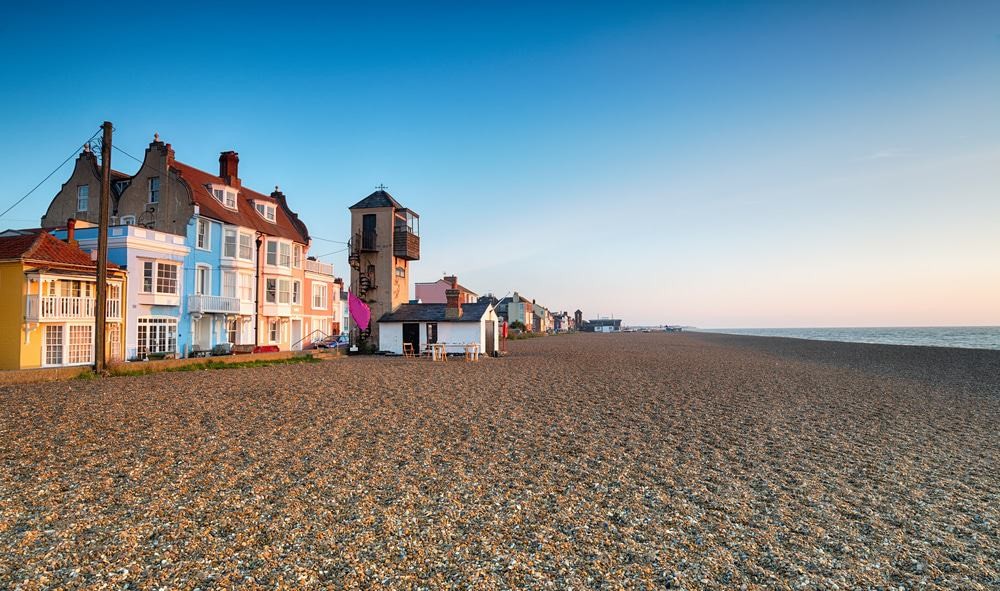 |
| The Crazy Tourist |
Aldeburgh is world-renowned thanks to its connection with Benjamin Britten, the founder of the Aldeburgh Festival, which takes place in June every year. Pastel-coloured 19th Century holiday villas line the promenade and to the east, the pebble beach with fisherman’s huts selling the daily catch.
The town gets its name from ‘Alde’ and ‘burgh’ meaning ‘old fort’ and is a former Tudor port given borough status by Henry VIII himself. The town and its shipbuilders were responsible for the creation of several famous vessels; Sir Francis Drake’s Golden Hind and the Virginia Company’s Sea Venture, to name but a few.
Aldeburgh has a rich cultural identity and is home to the Aldeburgh Literary Festival, multiple galleries and iconic sculptures as well as the Aldeburgh Music Club started by Benjamin Britten and Peter Pears in 1952.
Keep your eyes peeled for some of the well known people who call Aldeburgh home, from former Manchester United and Ireland midfielder Roy Keane to Peter Sinfield, founding member and lyricist for 70’s prog rock band King Crimson.
The town is famous for its outstanding fish and chips with the local fish and chip shop, owned by the Cooney family having received rave reviews from national publications.
The Martello tower in Aldeburgh is recorded as the largest in the UK, being made up of four towers joined together, it has been converted into holiday accommodation and is a unique place to stay when visiting the town.
 | Cultural Destination: Visit The Peaceful And Acient Ayutthaya of Thailand Once the capital of Thailand for about 400 years, Ayutthaya still preserves its unique and artistic temples and palaces that attract many tourists to this ... |
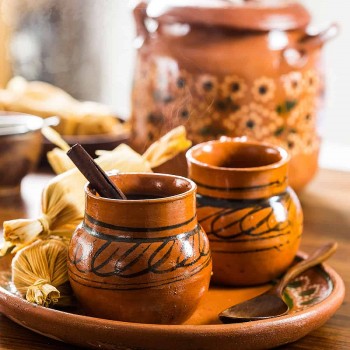 | Coffee Culture: How People Drink Coffee In Different Countries Coffee is a familiar drink in everyone's daily life, but it is not just simple as that. In some countries, it is also a cultural ... |
 | Angel’s Landing – The Rocky Hide Challenges The Bravest Hearts Climbing and hiking on rocky mountain paths have been a favourite, addictive in the United States. This Angel's Landing is one of the most dangerous ... |
Recommended
 Travel
Travel
Vietnam Through Australian Eyes: Land of Flavor, Warmth, and Timeless Charm
 Travel
Travel
Strategies for Sustainable Growth of Vietnam’s Tourism from International Markets
 Travel
Travel
Vietnam Strengthens Its Presence On The Global Tourism Map
 Multimedia
Multimedia
Phong Nha-Ke Bang National Park Named Top Adventure Travel Site
Popular article
 Travel
Travel
Vietnam Welcomes Record-High Number of International Visitors
 Travel
Travel
Luxury Train From Hanoi To Hai Phong To Be Launched In May
 Travel
Travel
Phong Nha Named Top Budget-Friendly Travel Destination for Spring 2025: Agoda
 Travel
Travel







